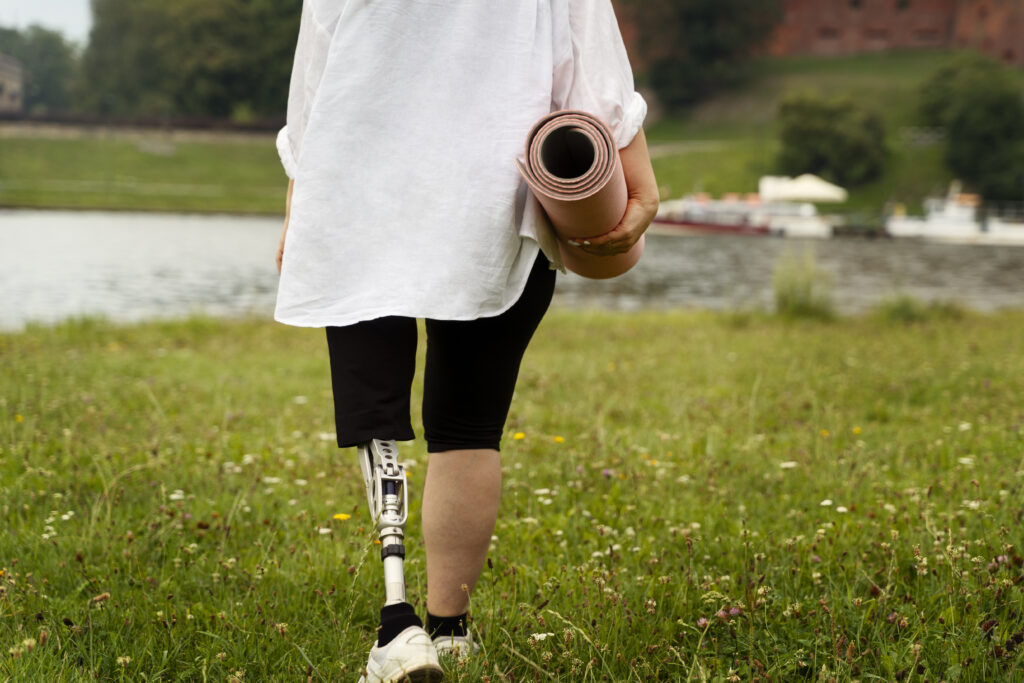Post Amputation

Post-amputation rehabilitation is a crucial process that helps individuals regain strength, mobility, and independence after limb amputation. It’s a comprehensive program that incorporates various therapies to address physical, emotional, and social aspects of living with an amputation.
The goals of post-amputation rehab typically include:
- Wound healing and stump care: Proper management of the surgical site is essential to prevent infection and promote healing. This may involve dressing changes, scar management, and edema control.
- Pain management: Amputation can cause acute and chronic pain. Rehabilitation specialists employ various techniques to manage pain, including medication, physical therapy, and nerve blocks.
- Restoring strength and balance:Exercises are designed to strengthen muscles around the residual limb and improve core stability. This helps individuals regain balance and coordination for safe ambulation.
Treatment program:
- Faradic stimulation to improve power of preserved weak muscles.
- TENS application for pain relief (phantom pain)by causing a mild electrical stimulation to the neural system that enhances production of beta endorphin and encephalin (pain killer).
- Ultrasound for pain relief (phantom pain) by increase extensibility of muscles, allow micro message effect , vasodilatation of the blood vessels and Increasing number of white blood cells that invade the microorganisms.
- Laser therapy for pain relief through accelerate the inflammatory phase of the healing process, stimulating B endorphin secretion which is associated with inhibiting synthesis of prostaglandin, decreased the conduction velocity of the sensory nerve and stimulates the gate control to inhibit pain pathway.
- Strengthening exercise to improve power of weak muscles.
- Stretching exercise to improve flexibility of shorted muscles.
- Proprioceptive exercise to regain joint receptor sensitivity.
- Gait training by prosthesis.
- At Dar EL-MONA Creating an individualized plan of treatment begins with a comprehensive assessment, which informs the development of a tailored individualized intervention strategy.
- Each patient’s treatment plan is tailored to their specific needs, considering the severity of their condition, overall health, and rehabilitation goals. Continuous assessment and adjustment of the manual therapy techniques ensure optimal outcomes.
